A data model provides the foundational details for constructing and deconstructing complex data structures and their overarching information systems. Part visual design and part data science, data modeling has evolved over the years with its own set of methodologies and processes—and the software market has evolved with it, with vendors providing feature rich tools to meet enterprise needs.
We evaluated the 10 most popular data mining software solutions on the market to see how they compared on core and enterprise features, integrations, customer support, and pricing. Here are our top seven picks for data modeling software:
Read on for more details about all 10 systems.
Data modeling serves as a bridge between real-world business processes and the databases that store and manage the data, illustrating the underlying data structures, relationships, and constraints within a system or organization. This chart shows at a glance how the top data modeling tools compare against our evaluation criteria.

Toad Data Modeler
Best Overall
Toad is a longstanding data modeling favorite among data professionals and database administrators. The solution is known for being a simplified, no-frills data modeling tool for creating high-quality database structures or making automatic changes to existing models.
For many database administrators, Toad continues to be a go-to option for accomplishing data modeling tasks cost effectively, from design and maintenance to documentation and collaboration.

Overall rating: ?????
- Pricing: 5/5
- Core Features: 5/5
- Enterprise Features: x/5
- Integrations: 5/5
- Support: 4/5
Pros and cons
| Pros |
Cons |
| Support for a broad range of enterprise DBMS flavors |
Windows-only support |
| Automated SQL code generation |
Lackluster user interface |
Pricing
- $400 for a 12 month term license
- Free trial available
Features
- Generates detailed reports on existing database structures
- Support for complex logical and physical entity relationship modeling
- Folder structure for store models, business requirements, specifications, and other files in one location
Visit Quest Toad Data Modeler

erwin Data Modeler
Best for Support and Integrations
erwin has been a fixture of the data modeling world since the early days of desktop RDBMS tools. These days the award-winning tool is owned by Quest software; however, the solution is still a popular option for finding, visualizing, designing, deploying, and standardizing high-quality enterprise data assets.
It allows data professionals to discover and document any dataset located anywhere for consistency, clarity, and artifact reuse, and is instrumental for large-scale data integrations, master data management, metadata management, and other business intelligence and analytics initiatives and use cases.
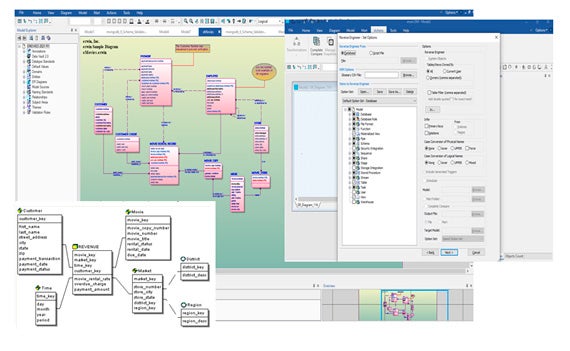
Overall rating: ????✫
- Pricing: 2/5
- Core Features: 5/5
- Enterprise Features: 5/5
- Integrations: 5/5
- Support: 2/5
Pros and cons
| Pros |
Cons |
| Industry-leading data modeling features and functionality |
Expensive 12-month subscription |
| Strong artifact reuse capabilities |
User interface feels outdated |
Pricing
- $3,800 for 12 month subscription
- Free trial available
Features
- Views on structured and unstructured enterprise data
- Automated data model and database schema generation
- Integrated view of conceptual, logical and physical data models
Visit Erwin
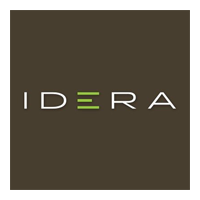
Idera ER/Studio Data Architect
Best for Integrations
ER/Studio is a data modeling tool designed with enterprise data professionals in mind—for example, its toolset is capable of enterprise-focused data architecture functions like change management and impact analyses of new policies or projected changes to data models, databases, or data fields.
The solution is especially robust in its enterprise data governance and management capabilities. Using this tool, enterprise data professionals can easily build an organization-wide business glossary to define and catalog data assets and data structures.
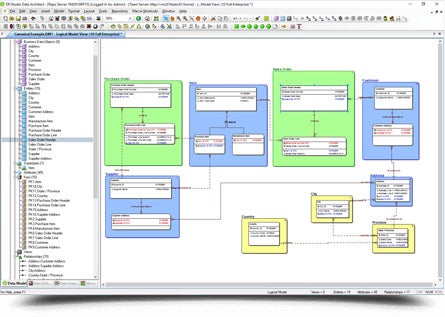
Overall rating: ???✫✫
- Pricing: 3/5
- Core Features: 4/5
- Enterprise Features: 3/5
- Integrations: 4.5/5
- Support: 4/5
Pros and cons
| Pros |
Cons |
| Strong conceptual modeling features |
Higher price point |
| Supports a variety of Unified Modeling Language (UML) modeling architectures/standards |
Features can be difficult to learn and use |
Pricing
- $1,470.40 per user (workstation)
Features
- Capable of generating source code from existing databases
- Advanced compare and merge tools
- Multi-database model and metadata documentation
Visit Idera ER/Studio Data Architect
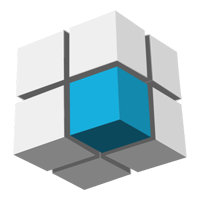
DbSchema Pro
Best for Core Features
German software vendor Wise Coders GmbH develops and maintains DbSchema, a leading data modeling tool for visually documenting SQL and NoSQL databases. The solution is known for its Visual Query Composer, which makes it easy to explore data across multiple tables.
The tool also provides a range of powerful features, such as its testing feature for verifying performance against randomly generated data and support for up to 100,000 tables.
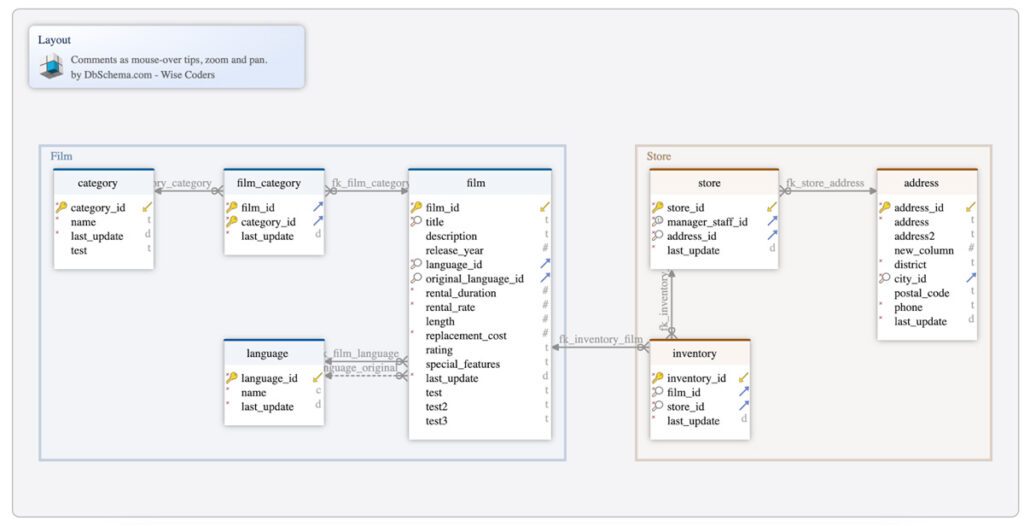
Overall rating: ????✫
- Pricing: 4.5/5
- Core Features: 5/5
- Enterprise Features: 3.5/5
- Integrations: 4/5
- Support: 2.5/5
Pros and cons
| Pros |
Cons |
| Flexible Java database connectivity driver and extensibility |
Limited documentation and support |
| Broad range of supported databases |
Lackluster interface |
Pricing
- $294 per year
- Free trial available
Features
- JDBC drivers for multi-database connectivity and scheme reverse engineering
- Secure database connections with SSH
- Cloud database connectivity
Visit DbSchema Pro
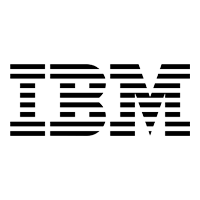
IBM InfoSphere Data Architect
Best for Enterprise Features
IBM needs little introduction, and as such, its InfoSphere Data Architect tool has been the enterprise data architect’s favorite collaborative data modeling and design solution for some time now. The solution is ideal for use cases like simplifying or accelerating integration design for business intelligence, master data management, and service-oriented architecture initiatives.
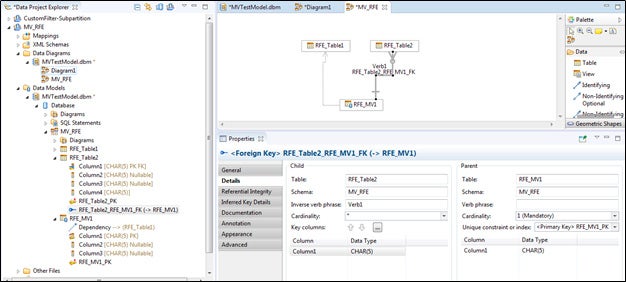
Overall rating: ????✫
- Pricing: 2/5
- Core Features: 4/5
- Enterprise Features: 5/5
- Integrations: 4/5
- Support: 3.5/5
Pros and cons
| Pros |
Cons |
| Powerful Java-based enterprise features |
Single pricing tier/option |
| Strong support for common enterprise DBMS |
Unwieldy and cluttered UI |
Pricing
Features
- Source control management with Git and Microsoft Team Foundation Server (TFS)
- Native data querying using JDBC
- Host of team collaboration and integration features (e.g., shared Eclipse plugin)
Visit IBM InfoSphere Data Architect
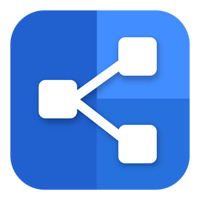
dbdiagram.io
Best for Pricing
Dbdiagram.io is fast becoming a favorite among developers and data analysts looking for a simple cloud-based tool to draw entity relationship (E/R) diagrams. Available free of charge, the tool is a fast and efficient solution for getting a handle on your application’s underlying data structures.
Dbdiagram.io is part of Holistics, a powerful business intelligence (BI) platform focused on simplifying data engineering with tools for data warehousing and creating automated reporting routines.

Overall rating: ???✫✫
- Pricing: 5/5
- Core Features: 2/5
- Enterprise Features: 3/5
- Integrations: 3/5
- Support: 2/5
Pros and cons
| Pros |
Cons |
| Straightforward, easy-to-use functionality |
Limited breadth of features |
| Fully SaaS-based tool with nothing to install |
Requires cloud access |
Pricing
- Personal Tier is free forever
- Pro plan starts at $9 per month
Features
- One-click sharing for easy online diagram sharing
- Direct SQL statement generation for creating database tables
- Direct E/R diagram image/PDF export feature
Visit dbdiagram.io

ERBuilder Data Modeler
Best for Relational Notations
Like DTM Data Modeler, ERBuilder Data Modeler as a powerful tool for forward and reverse engineering of databases and data exploration use cases. The solution features an easy-to-use visual data modeler and access to advanced data structure configurations.
ERBuilder Data Modeler is especially competent in providing data professionals exploration capabilities—for example, to understand data structures extracted from large databases. The tool offers an advanced search feature integrated into the data model browser for quickly locating data structures.

Overall rating: ???✫✫
- Pricing: 5/5
- Core Features: 4/5
- Enterprise Features: 3/5
- Integrations: 2/5
- Support: 2/5
Pros and cons
| Pros |
Cons |
| Easy-to-use tool |
Simplistic/limited UI |
| Test data generation feature for easily populating database with test data |
Limited range of supported databases |
Pricing
- $89 per year, per license
- Free trial available
Features
- IDEF1X, Crow’s Foot, Codasyl and Relational notations
- Advanced diagram capabilities like table auto-arrange
- Syntax highlighting and diagram sizing
Visit SoftBuilder ERBuilder
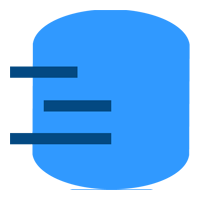
SqlDBM
SqlDBM is a cloud-based database design tool capable of importing existing databases, automatically generating SQL, and supporting various other collaboration features. Compared to some of the other tools on this list, SqlDBM’s streamlined UI for data modeling and diagramming is more inline with today’s born-in-the-cloud SaaS offerings.

Overall rating: ???✫✫
- Pricing: 2/5
- Core Features: 5/5
- Enterprise Features: 5/5
- Integrations: 5/5
- Support: 2/5
Pros and cons
| Pros |
Cons |
| Streamlined modern interface. |
Costly option for non-enterprises. |
| Support for modern distributed databases (e.g., Hadoop, Spark/Databricks) |
Lack of support options and documentation. |
Pricing
- Starts at $4,000/2 seats (Starter Tier).
Features
- Integration with web apps and git repositories
- Advanced tools like linear analysis and comparison
- Concurrent work and commenting on any object tagging
Visit SqlDBM

pgModeler
PgModeler is an open source data modeling tool that allows developers to fully customize its interface and functionality. The solution is capable of generating columns and restrictions automatically for PostgreSQL databases.
Despite its PostgreSQL-only support, pgModeler (as an open source tool) could ostensibly be extended to other database types. The solution provides a simple but effective database management interface for running SQL commands and exploring database objects.
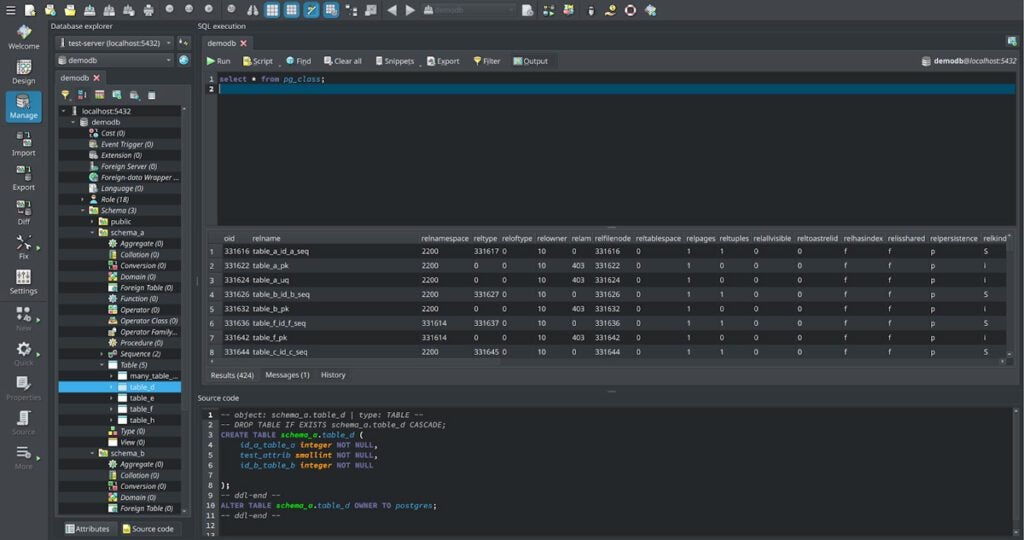
Overall rating: ???✫✫
- Pricing: 5/5
- Core Features: 4/5
- Enterprise Features: 1/5
- Integrations: 3/5
- Support: 2/5
Pros and cons
| Pros |
Cons |
| Highly extensible, open source solution |
PostgreSQL databases only |
| Easy to get up to speed with |
Advanced features require custom compilation |
Pricing
- $280 for a perpetual license
Features
- Plugin repository and development interface
- Dynamic code generation for supporting different PostgreSQL versions
- Open source solution
Visit pgModeler

DTM Data Modeler
DTM Data Modeler is a database modeling tool that supports both forward engineering—(i.e., creating a new system from scratch—and reverse engineering, or analyzing an existing system to understand its design and functionality. The easy-to-use tool features an E/R diagram that allows for working with both logical and physical data models.
The solution allows configuring basic model properties (sets of entities/relationships, for example) as well as creating the indexes and triggers on the physical level corresponding to the underlying database tables.
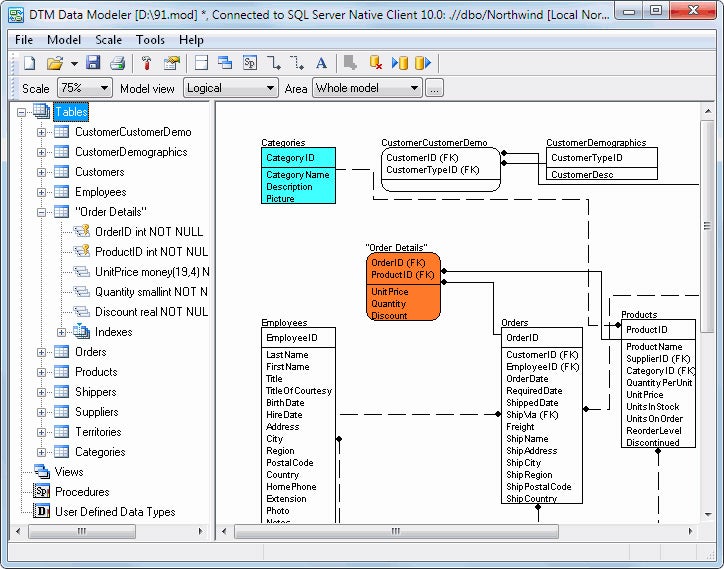
Overall rating: ??✫✫✫
- Pricing: 3/5
- Core Features: 20/5
- Enterprise Features: 2/5
- Integrations: 2/5
- Support: 1/5
Pros and cons
| Pros |
Cons |
| Powerful database conversion capabilities |
SQL Server/Oracle/DB2 only |
| Quick start console for getting up to speed with functionality |
Limited UI |
Pricing
Features
- Tree-like browser for managing database objects
- Editors for indexes, stored procedures, and triggers
- Forward and reverse engineering features with template customizations
Visit DTM Data Modeler
Key Features of Data Modeling Software
Data modeling is part visual design, part data science and engineering. As such, an optimal data modeling software solution should include features that effectively bring these two domains together. The following are key features of data modeling software.
General Feature Set
A competent data modeling solution should offer support for multiple database vendors or types as well as multiple operating systems desktop software only). Out of the gate, the solution should provide a palette of modeling tools and a pre-built library of data models/objects.
Integrations and Support
Crucially, an enterprise data modeling platform should offer premium support options—live chat and voice support, for example—and extensive documentation for supporting mission-critical use cases. In the case of open source tooling, the offering should provide ample developer resources and a broad ecosystem of supporters.
Free Version and Commercial Value
Pricing varies dramatically across the tools in this list, with a handful of contenders adopting a more contemporary SaaS/subscription-based model. Unsurprisingly, these were the more cost-effective options.
How to Choose the Best Data Modeling Software for Your Business
To select the right data modeling software, start by determining your organization’s data modeling needs—are they relegated to a specific project, a spot use case, or part of a longer-term initiative or sustained effort?
For example, developers looking for a quick E/R diagramming tool during ideation phases may benefit the most from a low-cost cloud data modeling tool.
How We Evaluated Data Modeling Software
We evaluated the modeling tools in this guide against the following criteria: core and enterprise features, integrations, support, and pricing. :
Core Features | 20 percent
Core features include modeling tools/library, supported operating systems, data visualizations, to name a few.
Enterprise Features | 20 percent
Some enterprise requirements include support for multiple database types—including the typical enterprise DBMS offerings—as well as SaaS and desktop versions.
Integrations | 20 percent
Data modeling software should allow for integrations via a REST API, as well as provide libraries/plugins and developer resources.
Support | 20 percent
Data modeling solutions should offer a range of support options, including live chat, phone, and email support—as well as self-service resources (e.g., documentation/knowledge base) and premium support, if needed.
Pricing | 20 percent
In terms of pricing, data modeling tools range from open-source/free to the mid-hundreds per license; it’s safe to assume that many will continue moving towards the subscription-based model, as cloud offerings proliferate and desktop-installed software fall to the wayside.
Frequently Asked Questions (FAQs)
We answer some of the most common questions about data modeling tools.
What is data modeling software?
Data modeling software is a type of application for creating structured representations of data to facilitate its organization, storage, and analysis, often using diagrams or schemas to illustrate the relationships between different data elements.
What are key features of data modeling software?
Data modeling software typically offers tools for designing and visualizing data structures, defining relationships between data entities, ensuring data integrity, and generating database schemas or code for implementation.
Now more than ever, data modeling plays a crucial role in both traditional RDBMS, data warehouses, as well as today and tomorrow’s artificial intelligence and machine learning (AI/ML) data workflows.
How can I use data modeling software for ML applications?
Data modeling software can be used to model data structures like neural networks, decision trees, or regression algorithms, when making predictions or designing inference services on top of complex datasets.
Bottom Line: Data Modeling Software
Data modeling—creating a visual representation of databases and information systems—is often done by a team of data engineers, data analysts, and data architects, alongside database administrators familiar with the organization’s needs. Models can represent part or all of a database, with the goal of simplifying access to it, understanding the types of data within it, and understanding the relationships between the various data points and groups.
Enterprise data models are built around the specific needs and requirements of the organization. They can be visualized on various levels of abstraction depending on the information that needs to be extracted for the dataset. Organizations use data models to fuel a wide range of data-driven activities that support nearly every aspect of operations—choosing the right data model software is critical to the success of those efforts and investments.
Read about the differences between hierarchical and relational and logical and physical data models to learn more about how enterprises design and manage their data infrastructure.



















